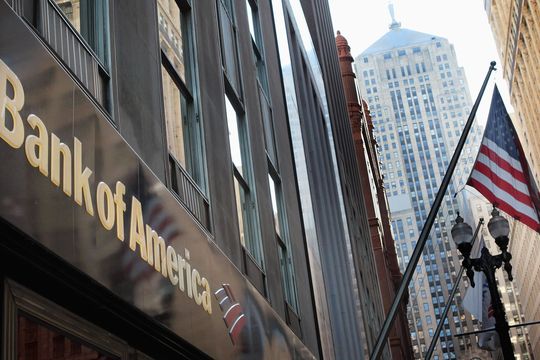Dow tumbles for 4th straight session
U.S. stock benchmarks finished lower Wednesday, with the Nasdaq Composite booking its first close in correction territory since March, as sharply higher bond yields and elevated inflation rattle investors.
Banks stocks were again in the spotlight, with Morgan Stanley and Bank of America reporting quarterly results.
How did stock indexes fare?
- The S&P 500 index SPX, -0.97% shed 44.34 points, or 1%, ending at 4,532.77, led by declines in consumer discretionary SP500.25, -1.81% and financials SP500.40, -1.65%.
- The Dow Jones Industrial Average DJIA, -0.96% fell 339.82 points, or 1%, finishing at 35,028.65.
- The Nasdaq Composite Index COMP, -1.15% lost 1.2%, or 166.64 points, closing at 14,340.26, or below its correction level at 14,451.69. The technology-laden index last closed in correction on March 8, 2021.
On Tuesday, stocks fell sharply, with the Nasdaq Composite tumbling 2.6% to finish below its 200-day moving average.
What drove markets?
Markets tumbled into the closing bell Wednesday in another session of volatile trade, a potential sign of the “new normal” for equities, as the Federal Reserve looks to tighten financial conditions and tamp down inflation.
“I don’t think it’s going to be a short-lived bout of volatility,” said Matt Peron, Janus Henderson’s director of research, in a phone interview. “There’s a lot policy normalization that has to happen. There are a lot of changes in investors’ thinking that needs to happen, and those typically take time.”
While Peron said he’s “constructive on the long term” for stocks, he also expects the next three to six months to be choppy as the Fed looks to rein in easy monetary conditions unleashed during the pandemic.
Surging Treasury yields have weighed on the market’s bullishness, particularly hitting yield-sensitive technology and other growth equities hard. The yield on the 10-year Treasury note TMUBMUSD10Y, 1.857% on Wednesday was at around 1.826%, pulling back somewhat, after reaching highs not seen since early 2020.
The yield on the 2-year Treasury note TMUBMUSD02Y, 1.063%, more sensitive to Federal Reserve policy expectations, fell 1.6 basis points to 1.022%, after hitting its highest level since February 2020.
“There is concern that…the Fed is not easing into monetary policy normalization because it is so far behind the curve,” Invesco’s chief global market strategist, Kristina Hooper, told MarketWatch.
She also sees inflation, which the Fed now plans to fight, as weighing on the stock market. “In a number of the earnings calls, we are hearing about expenses going up…we’re hearing about compensation going up,” Hooper said, noting that wage inflation tends to be longer-lived.
The Fed is scheduled to meet next Tuesday and Wednesday, though many think January will be too soon to pencil in the first interest-rate hike of the year. Federated Hermes’ Philip Orlando expects four rate hikes this year, starting in March, each in 25-basis-point increases, even through others have begun calling for a series of 50-basis-point hikes to help “get the inflation genie back in the bottle.”
“I don’t think they will be that aggressive,” the chief equity-market strategist told MarketWatch. “But the reality is we just don’t know. I think that’s going to create a lot of volatility and uncertainty in the markets right now.”
In U.S. economic reports, home builders started construction on homes at a seasonally adjusted annual rate of roughly 1.7 million in December, representing a 1% increase from the previous month, the U.S. Census Bureau reported Wednesday. Compared with December 2020, housing starts were up 2.5%.
Permitting for new homes also occurred at a seasonally adjusted annual rate of 1.87 million, up 9% from November and 6.5% from a year ago.
Separately, crude oil prices CL00, -0.13% BRN00, -0.23% on Wednesday closed at their highest levels in more than seven years, following reports that an explosion disrupted flow through the Kirkuk-Ceyhan pipeline between Iraq and Turkey.
The International Energy Agency also predicted global oil demand will exceed pre-pandemic levels this year due to increased vaccination against COVID-19 and milder recent waves of the virus. West Texas Intermediate crude for February delivery CLG22, +0.08% closed up 1.8% to around $86.96 a barrel.
Which companies were in focus?
- Investors poured over a report from Bank of America BAC, +0.39% after the bank reported fourth-quarter profit that rose above expectations. Shares rose 0.4%.
- Morgan Stanley MS shares were in focus after the bank beat profit estimates for the fourth quarter amid strong performances at its investment banking and wealth management divisions. Its stock rose 1.8%.
- Procter & Gamble Co. PG shares added 3.4% Wednesday after the consumer products company reported fiscal second-quarter results that beat expectations and narrowed its full-year sales guidance.
- UnitedHealth Group Inc. UNH reported fourth-quarter profit and revenue that rose above expectations and affirmed its full-year outlook. Its stock added 0.3%.
- U.S. listed shares of ASML Holding ASML, -2.29% fell 2.3% after the Dutch semiconductor-equipment maker reported better-than-forecast fourth-quarter earnings, predicted a 20% rise in sales this year and doubled its dividend to €5.50.
- SoFi Technologies Inc. shares SOFI, +13.68% climbed 13.7% after the financial-technology group said that it won regulatory approval to become a bank holding company.
- Shares of Zogenix Inc. ZGNX, +65.73% surged 65.7% after the biopharmaceutical company agreed to a deal to be acquired by Belgian peer UCB, with an up to $1.9 billion valuation.
How did other assets do?
- The ICE U.S. Dollar Index DXY, a measure of the currency against a basket of six rivals, fell 0.2%.
- Gold futures GC00 rose 1.67%, settling at a two-month high at $1,843.20 an ounce.
- The Stoxx Europe 600 SXXP closed 0.2% higher, but well off its high, while London’s FTSE 100 UKX, a commodity-heavy index, advanced 0.4%.
- The Shanghai Composite SHCOMP declined 0.3%, while the Hang Seng Index HSI rose less than 0.1% in Hong Kong and the Nikkei 225 NIK declined 2.8%.

